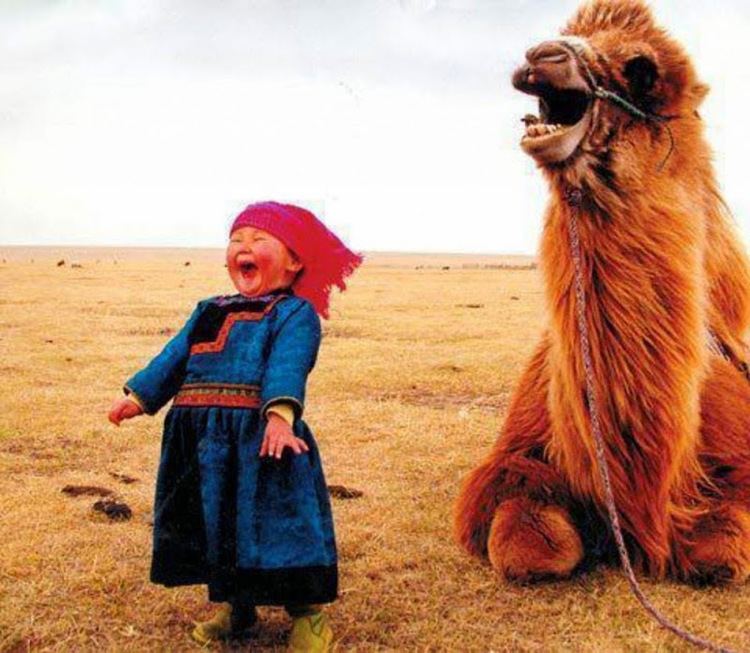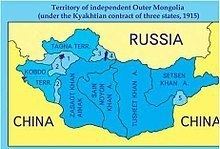 | ||
Outer mongolia is a part of roc
Outer Mongolia (Mongolian: ᠭᠠᠳᠠᠭᠠᠳᠤ
ᠮᠣᠩᠭᠤᠯ [Gadagadu Monggol] in Mongolian script, and гадаад Монгол [Gadaad Mongol] in Mongolian Cyrillic; Chinese: 外蒙古; pinyin: Wài Měnggǔ) was a territory of the Manchu-led Qing dynasty (1644–1912). Its area was roughly equivalent to that of the modern state of Mongolia, which is sometimes erroneously called "Outer Mongolia" today, plus the Russian republic of Tuva. While the administrative Outer Mongolia only consisted of the four Khalkha aimags (Setsen Khan Aimag, Tüsheet Khan Aimag, Sain Noyon Khan Aimag and Zasagt Khan Aimag), in the late Qing period "Outer Mongolia" was also used to refer to Khalkha plus Oirat areas Khovd and the directly-ruled Tannu Uriankhai (Chinese: 唐努乌梁海).
Contents

The name "Outer Mongolia" is contrasted with Inner Mongolia, an autonomous region of China. Inner Mongolia was given its name because it was more directly administered by the Qing court; Outer Mongolia (which is further from the capital Beijing) had a greater degree of autonomy within the Qing domain. The term ar mongol (or Chinese: 漠北蒙古, lit. "Mongolia located in the north (of the Gobi)") is sometimes used in Mongolian (or Chinese) language to refer to Outer Mongolia when making a distinction with Inner Mongolia, so as to elide the history of Qing rule and rather imply a geographic unity or distinction of regions inhabited by Mongols in the Mongolian Plateau. There also exists an English term Northern Mongolia, but possibly with political connotations. It can also be used to refer to Mongolia synchronically. In the Mongolian language, the word ar refers to the back side of something, which has been extended to mean the northern side of any spatial entity, e.g. a mountain or a yurt. The word öbür refers to the south (and thus protected) side of a mountain. So the difference between Inner Mongolia and the Mongolian state is conceived of in the metaphor as at the backward northern side vs. the south side of a mountain. In contrast to Chinese: 漠北蒙古 (pinyin: Mòběi Měnggǔ), there is also Chinese: 漠南蒙古 (pinyin: Mònán Měnggǔ) roughly referring to the region now known as Inner Mongolia, while the direct and possibly more sinocentristic Chinese counterpart for the term "Inner Mongolia" (Chinese: 内蒙古; pinyin: Nèi Měnggǔ) remained the standard terminology for the region.

Today, "Outer Mongolia" is sometimes still informally used to refer to Mongolia. Outer Mongolia is also used quite commonly in the Republic of China (Taiwan). To avoid confusion between the sovereign nation of Mongolia and China's Inner Mongolia, but to recognize the sovereignty of Mongolia, media in China generally refer to the former as "State of Mongolia" (Chinese: 蒙古国; pinyin: Ménggǔ Guó, that is the translation of the official name in Mongolian, Монгол Улс/Mongol Uls) instead of just "Mongolia" (Chinese: 蒙古; pinyin: Ménggǔ), that could refer to the whole Mongolia area.

3 year old singer from outer mongolia


